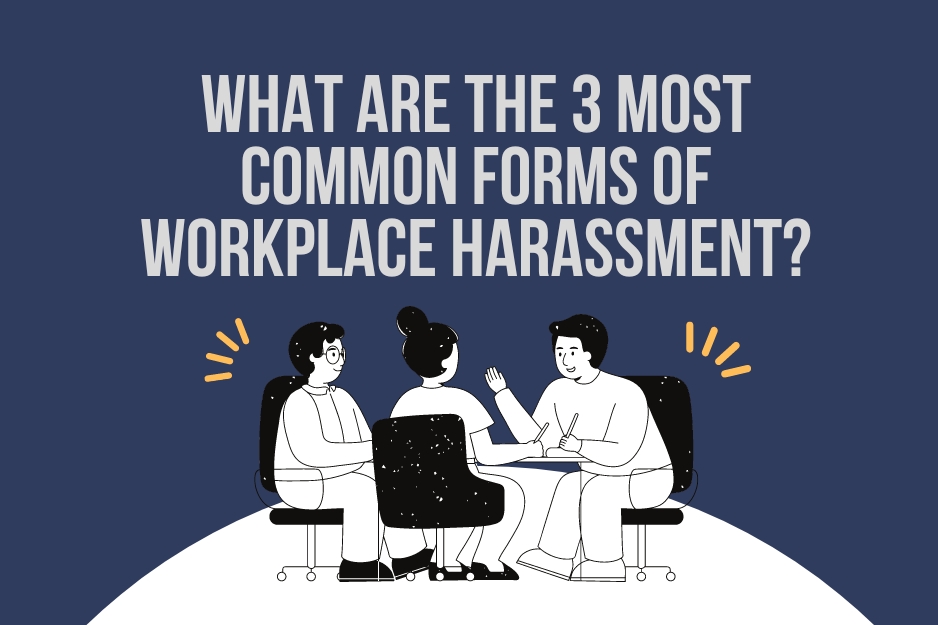
Lost Your Job Under Suspicious Circumstances? Here’s What Filing with CRD Really Looks Like
If you’ve recently been terminated from your job and suspect it was for illegal reasons, you’re likely experiencing a whirlwind of emotions – anger, confusion, and uncertainty about your future. Filing a complaint with California’s Civil Rights Department (CRD) can feel overwhelming, especially when you’re already dealing with the stress of job loss. The good news is that California has robust protections for employees who face wrongful termination, whether you were fired for reporting safety violations, filing a discrimination complaint, or refusing to break the law. Understanding what actually happens when you file a CRD complaint can help you feel more in control during this challenging time and give you a clearer picture of the road ahead.
💡 Pro Tip: Document everything immediately after your termination – save emails, text messages, and write down conversations while they’re fresh in your memory. This evidence will be crucial for your CRD complaint.
Feeling wrongfully terminated? Don’t let uncertainty keep you up at night. Connect with RD Law Group APC to explore your options and protect your rights. Give us a call at (424) 535-1500 or contact us today!
Understanding Your Rights When a California Wrongful Termination Lawyer Can Help
California law provides strong protections against wrongful termination, going beyond federal standards in many cases. You have a wrongful termination claim when you are let go for illegal reasons, in violation of public policy, or in violation of company policy. For example, if you were fired after lodging a racial discrimination complaint with the Equal Employment Opportunity Commission (EEOC), you were wrongfully terminated. Similarly, if you work for a debt collection agency and were fired because you refused to use fraud or break consumer protection laws, you would have a valid claim. While most employment in California is "at will" – meaning an employee may be fired at any time and for any reason – that reason cannot be illegal. This is where working with a California wrongful termination lawyer becomes invaluable, as they can help identify whether your termination violated specific laws or policies.
Beyond traditional wrongful termination claims, California employees might also have grounds to sue if they were essentially forced to quit because their employer created an unsafe work environment – a situation known as constructive discharge. Additionally, if you have a written contract or other documents stating you can only be fired for good cause, and there was no good cause, you may be able to sue for breach of contract. Some courts may even find a breach of an implied employment contract when an employer has stated employment will be for a particular period of time and then breaks this promise. Understanding these nuances is crucial because wrongful termination is not always the only cause of action available, and sometimes it may be inappropriate to pursue compared to other legal remedies.
💡 Pro Tip: Keep copies of your employee handbook, any written contracts, and performance reviews – these documents can prove crucial in establishing whether your termination violated company policies or contractual agreements.
Your Step-by-Step Journey Through the CRD Complaint Process
Filing a wrongful termination complaint with California’s Civil Rights Department follows a specific timeline and process that’s important to understand from the outset. The California Civil Rights System (CCRS) is a cloud-based application that allows members of the public to submit complaints online 24/7 for all civil rights laws CRD enforces, making it more accessible than ever to start your claim. However, timing is critical – in employment cases, you must submit an intake form to CRD within three years of the date you were last harmed, which is typically your termination date. This three-year window is more generous than many other states, but it’s still essential to act promptly while evidence is fresh and witnesses are available.
- Initial Filing: Submit your complaint through the CCRS online portal, providing detailed information about your termination and why you believe it was unlawful – your unfiled complaint will remain available in the system for 30 days if you need to gather additional information
- Screening Process: CRD screens all initial claims and rejects those that do not allege violations of the laws they enforce before serving a complaint on your employer – this initial review typically happens within 60 days
- Employer Notification: Once CRD accepts your complaint, they are required by law to notify your employer that a charge has been filed, giving them an opportunity to respond to the allegations
- Mediation Opportunity: Either party can request mediation without an offer from CRD, and as long as both parties agree to participate, CRD will consider the charge for mediation – this voluntary process can resolve cases much faster than formal investigations
- Investigation Phase: If mediation fails or isn’t pursued, CRD conducts a thorough investigation that can last several months, during which they may interview witnesses and review documents
- Determination: CRD will either find reasonable cause that discrimination occurred or issue a right-to-sue letter if they don’t find sufficient evidence
💡 Pro Tip: If you have 60 days or fewer to file a timely charge, the EEOC Public Portal provides special directions for quickly providing necessary information – don’t wait until the last minute to start your filing.
Navigating Mediation and Resolution Options with RD Law Group APC
When you file a wrongful termination complaint, resolution can come through several pathways, and understanding these options helps you make informed decisions about your case. Participation in mediation programs is strictly voluntary for both parties, but it offers significant advantages – mediation usually takes place early in the process prior to an investigation of the charge, saving resources and preventing the hardening of positions that can occur during a lengthy investigation. All mediators, whether internal staff or external contractors, are neutral unbiased professionals with no stake in the outcome, and the process maintains strict confidentiality with mediators and parties signing agreements to keep everything revealed during mediation confidential. If you’re facing this complex process, RD Law Group APC has extensive experience guiding clients through CRD complaints and can help you understand which resolution path best serves your interests while protecting your rights throughout the proceedings.
If CRD makes a reasonable cause determination, the parties are typically required to go to mediation where they have the opportunity to reach an agreement to resolve the dispute and close the case. However, if the case is not resolved in mediation, CRD may file a lawsuit in court on your behalf, though this is relatively rare. More commonly, if CRD dismisses your charge – whether because the laws don’t apply to your claims, the charge wasn’t filed within time limits, or they decide to limit their investigation – they will notify you of your legal rights and issue a right-to-sue letter. This letter gives you 90 days to file a private lawsuit, making it crucial to consult a lawyer immediately upon receiving it to protect your ability to pursue compensation for lost wages, benefits, and other damages through the court system.
💡 Pro Tip: Even if you’re in mediation, continue gathering evidence and maintaining records – if mediation fails, you’ll need comprehensive documentation for the next phase of your case.
The Burden of Proof: Building Your Wrongful Termination Case
In a wrongful termination case, the employee typically bears the burden of proof, which means you must demonstrate a direct link between your protected conduct or status and the decision to terminate you. This burden can feel daunting, especially when you’re up against an employer with significant resources. The process works in stages: first, you must produce evidence showing you were fired for an illegal reason, then your employer has the opportunity to explain their legitimate reasons for the termination. This back-and-forth continues as you may then need to show that the employer’s stated reasons are actually pretext for illegal discrimination or retaliation. Understanding this burden is crucial because it shapes how you should approach gathering evidence and presenting your case from the very beginning.
Evidence That Strengthens Your Position
The most compelling wrongful termination cases rely on concrete evidence rather than speculation or feelings. Direct evidence might include emails or recorded statements showing discriminatory intent, but more often, cases rely on circumstantial evidence that creates a pattern. For instance, if you filed a safety complaint and were fired two weeks later despite years of positive performance reviews, the timing creates a strong inference of retaliation. Similarly, if other employees who didn’t engage in protected activity kept their jobs despite similar or worse performance issues, this comparative evidence can be powerful. Document retention is critical – CRD retains records for three years after a case is closed, and parties may request copies of the file once closed, so maintaining your own comprehensive records ensures you’re never caught without crucial evidence.
💡 Pro Tip: Create a timeline of events leading to your termination, including dates of protected activities, performance reviews, and any changes in how supervisors treated you – this chronology often reveals patterns that support your claim.
Special Considerations for Los Angeles County Employees
While the CRD complaint process remains consistent throughout California, employees in Los Angeles County may encounter some unique considerations due to the size and diversity of the local job market. The Los Angeles metropolitan area’s vast employment landscape means CRD offices handle an enormous volume of cases, potentially affecting processing times. Additionally, certain industries prevalent in Southern California, such as entertainment, hospitality, and technology, may have specific employment practices or union considerations that impact how wrongful termination claims proceed. Understanding these local factors can help set realistic expectations for your case timeline and strategy.
Dual-Filing and Federal Protections
Many Los Angeles employees don’t realize that if you file a charge with a Fair Employment Practices Agency (FEPA) like CRD, it will automatically be "dual-filed" with the EEOC if federal laws apply – you do not need to file with both agencies. This coordination between state and federal agencies can actually strengthen your position, as it ensures your complaint is evaluated under both California’s employee-friendly laws and federal protections. However, it’s important to note that federal employees and job applicants have similar protections but follow a different complaint process entirely, requiring them to work through their agency’s EEO process before filing with EEOC. A charge of discrimination is a signed statement asserting that an employer, union, or labor organization engaged in employment discrimination, and having this properly documented through the appropriate channels is essential for preserving all your legal options.
💡 Pro Tip: Even though dual-filing happens automatically, explicitly mention in your CRD complaint if you believe federal laws were also violated – this ensures nothing falls through the cracks during inter-agency coordination.
Frequently Asked Questions
Understanding the CRD Complaint Process
Many employees facing wrongful termination have similar questions about what to expect when filing with CRD. These answers address the most common concerns we hear from clients navigating this challenging process.
💡 Pro Tip: Write down all your questions before consulting with an attorney – even seemingly small details about your termination could be legally significant.
Next Steps After Filing Your Complaint
Once you’ve submitted your CRD complaint, understanding what comes next helps you prepare effectively and avoid missing crucial deadlines or opportunities to strengthen your case.
💡 Pro Tip: Set calendar reminders for all CRD deadlines and check your email daily – missing a response deadline could result in your case being dismissed.
1. How long does the CRD complaint process typically take from start to finish?
The timeline varies significantly depending on your case’s complexity and whether you pursue mediation. Initial screening typically occurs within 60 days, but if your case proceeds to investigation, it can take 10-12 months or longer. Mediation, when both parties agree, can resolve cases in as little as 2-3 months. If CRD files a lawsuit on your behalf, the process could extend several years.
2. Can I work with a California wrongful termination lawyer while my CRD complaint is pending?
Absolutely. Having legal representation during the CRD process is not only allowed but often beneficial. An attorney can help prepare your initial complaint, represent you during mediation, and ensure you’re building the strongest possible case. If CRD issues a right-to-sue letter, having an attorney already familiar with your case saves precious time during the 90-day filing window.
3. What happens if I miss the three-year deadline to file with CRD?
Missing the statute of limitations deadline typically bars you from pursuing a CRD complaint for wrongful termination. However, some exceptions might apply, such as if your employer actively concealed information or if you’re pursuing different legal theories like breach of contract, which may have different deadlines. Consult with an attorney immediately to explore any remaining options.
4. Is everything I share during the CRD complaint process confidential?
The level of confidentiality varies by stage. During mediation, strict confidentiality applies – all participants sign agreements keeping everything revealed confidential. However, information submitted in your initial complaint and during investigation may become part of the case record. Your employer will receive notice of the complaint and have access to the allegations against them.
5. What compensation might I receive if my wrongful termination complaint succeeds?
Successful wrongful termination claims can result in various forms of compensation including back pay (lost wages from termination date), front pay (future lost earnings), lost benefits, emotional distress damages, and sometimes punitive damages. In some cases, reinstatement to your former position might be ordered, though many employees prefer monetary compensation. Attorney fees may also be recoverable in discrimination cases.
Work with a Trusted Wrongful Termination Lawyer
Navigating the CRD complaint process while dealing with job loss can feel overwhelming, but you don’t have to face it alone. An experienced attorney can evaluate whether your termination violated California law, help gather and preserve crucial evidence, and guide you through each step of the complaint process. They can also identify whether you have additional claims beyond wrongful termination, such as breach of contract or wage violations, ensuring you pursue all available remedies. Most importantly, having legal representation sends a clear message that you’re serious about protecting your rights, often leading to more favorable settlement negotiations.
Facing the storm of a wrongful termination? RD Law Group APC is here to help you navigate the choppy waters. Reach out to us at (424) 535-1500 or contact us to chart a course towards your rights and opportunities.




